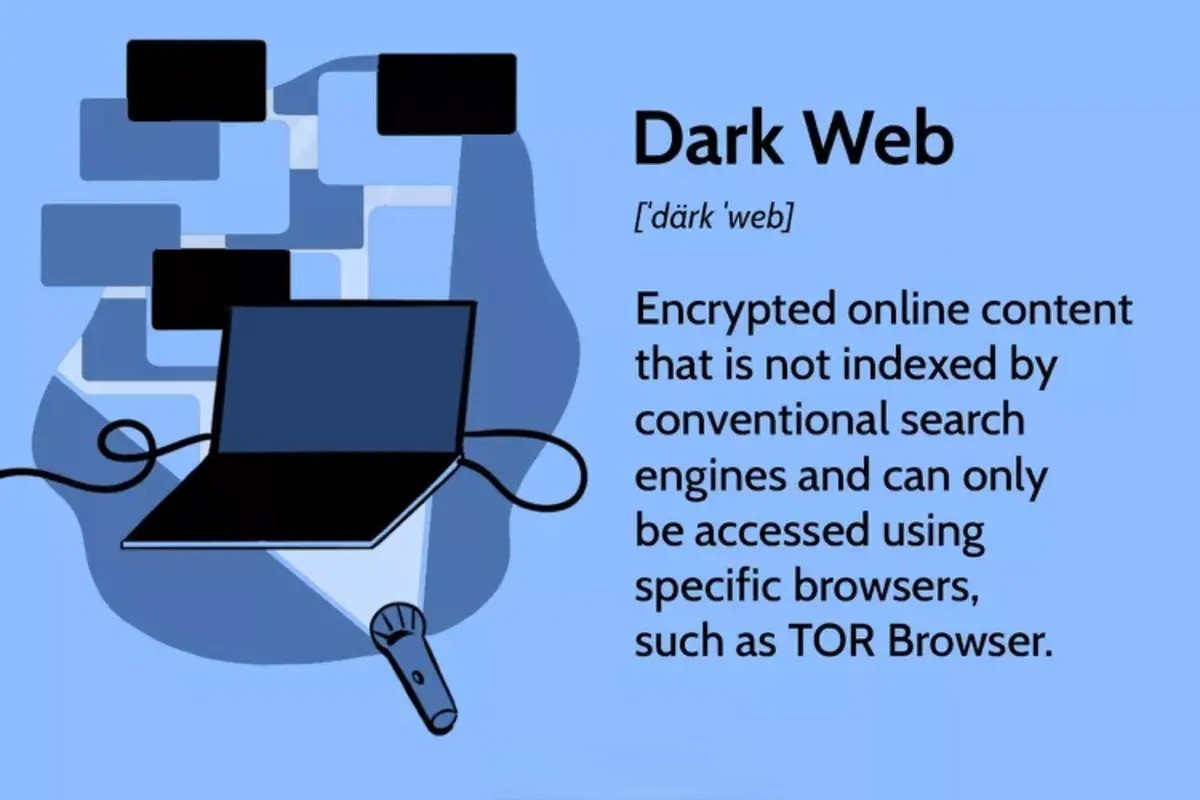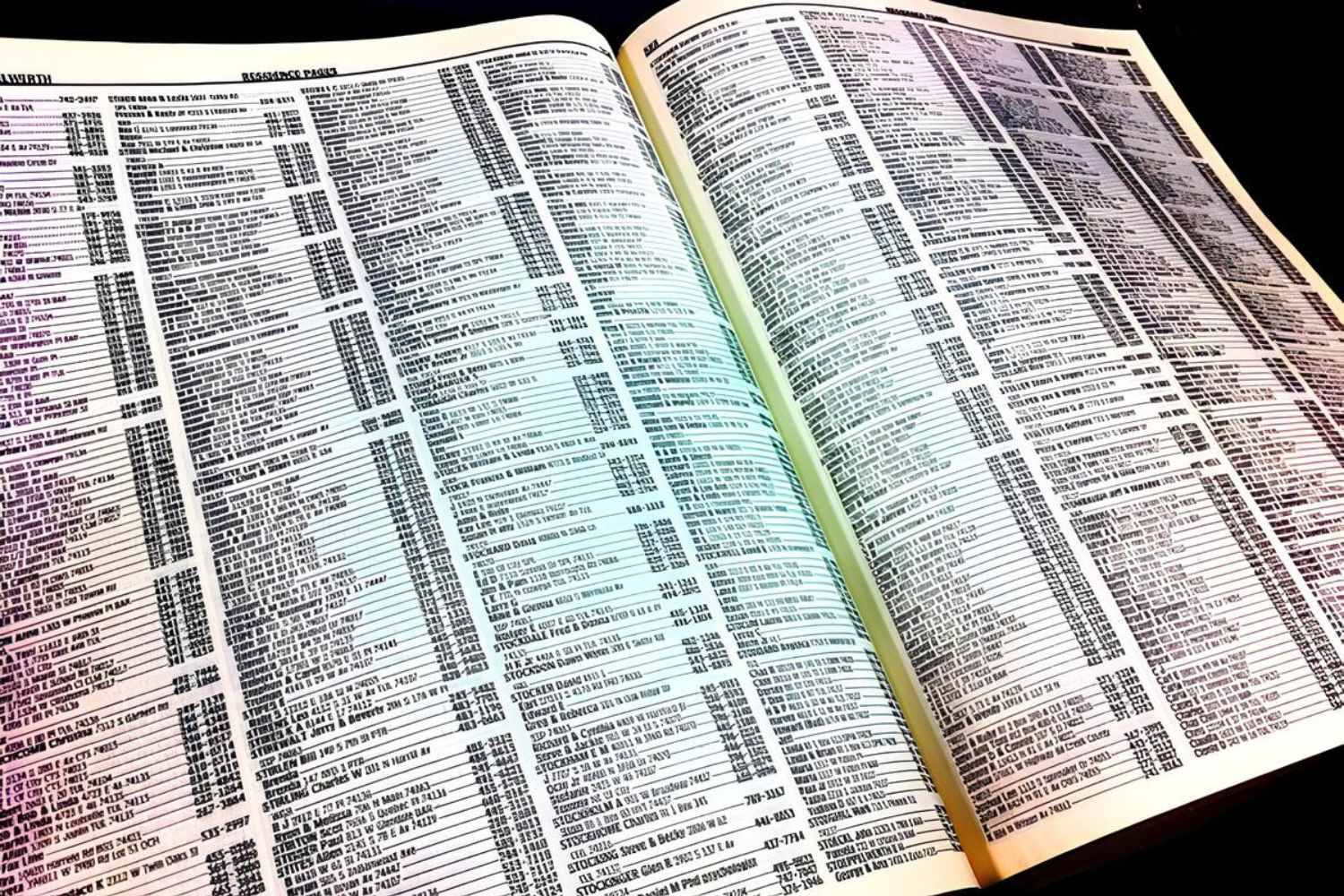Introduction
The Dark Web is a mysterious and often misunderstood corner of the internet that has captured the curiosity of many. It is a realm that is inaccessible to regular search engines and requires specialized software to access. With its reputation for being a hotbed of illegal activities, such as drug trafficking, hacking, and illicit marketplaces, there is a widely held belief that shutting down the Dark Web would be a simple task for authorities. However, the reality is far more complex.
The Dark Web operates on a network known as Tor, which stands for The Onion Router. This network is designed to ensure anonymous communication and browsing by encrypting and routing internet traffic through multiple layers of relays. This makes it incredibly difficult to trace the source of online activities and identify its participants.
Beyond the technical challenges, there are also legal and jurisdictional hurdles that complicate the task of shutting down the Dark Web. The distributed and decentralized nature of the Dark Web, combined with the lack of international cooperation, makes it exceptionally hard for law enforcement agencies to take effective action against its illicit activities.
In this article, we will explore the intricacies of the Dark Web and shed light on why it cannot be easily shut down. By understanding the technology, anonymity measures, and jurisdictional complexities involved, we can gain insight into the significant challenges faced by authorities in their efforts to combat this hidden realm of the internet.
Definition of the Dark Web
The Dark Web refers to a part of the internet that is intentionally hidden and inaccessible through traditional search engines. It is a sublayer of the Deep Web, which encompasses all websites that are not indexed by search engines.
Unlike the surface web that most people are familiar with, which includes popular search engines, social media platforms, and e-commerce websites, the Dark Web operates on encrypted networks and requires specific software, such as the Tor browser, to access it. This encryption layer ensures anonymity for both users and websites on the Dark Web.
On the Dark Web, websites and services are not easily identifiable by regular domain names, but rather by their unique alphanumeric addresses that end with the “.onion” domain. This domain signifies that the website is part of the Tor network and is only reachable through Tor-enabled browsers.
It is important to note that while the Dark Web has gained notoriety for illicit activities, it is not inherently illegal. It provides a level of privacy and security for users who seek to share sensitive information or evade censorship. The Dark Web has been used by journalists, activists, and individuals living under oppressive regimes to communicate and share information without fear of surveillance.
However, it is also true that the Dark Web has become a hub for black-market activities, including the sale of drugs, weapons, stolen data, and malicious software. It hosts illegal marketplaces where users can buy and sell goods and services anonymously, using cryptocurrencies as a means of payment.
The Dark Web encompasses a diverse range of websites and services, from anonymous forums and whistleblower platforms to hacking communities and cybercriminal networks. It is a complex web of hidden activities, both lawful and illicit, which poses significant challenges for attempts to shut it down.
The Technology Behind the Dark Web
The Dark Web relies on a combination of technologies to provide its unique environment of anonymity and privacy. The most well-known technology enabling the Dark Web is the Tor network, which stands for The Onion Router.
Tor operates by routing internet traffic through a series of volunteer-run servers known as relays. Each relay only knows the IP address of the previous and next relay in the chain, keeping the origin and destination of the data hidden. This multi-layered encryption and routing process makes it extremely challenging to trace internet traffic back to its source.
In addition to Tor, other technologies such as I2P (Invisible Internet Project) and Freenet also contribute to the infrastructure of the Dark Web. These decentralized networks function similarly to Tor, allowing users to access websites and services while protecting their anonymity.
One of the key features of Dark Web technologies is that they ensure end-to-end encryption, meaning that the content being transmitted is encrypted at the sender’s end and can only be decrypted by the intended recipient. This encryption makes it difficult for anyone intercepting the data to understand its contents.
Furthermore, the Dark Web leverages a distributed network architecture. Unlike traditional websites that are hosted on centralized servers, Dark Web websites are distributed across multiple nodes and servers. This decentralized nature makes it harder to target and shut down specific websites or servers.
It is worth noting that while the technology behind the Dark Web provides a level of anonymity, it is not foolproof. Various vulnerabilities and attacks, such as timing correlation attacks or compromised exit nodes, can compromise the privacy and security of users. Additionally, law enforcement agencies and intelligence services have developed techniques and tools to identify and track individuals despite the use of anonymity networks.
The technology behind the Dark Web constantly evolves as developers and researchers discover new security vulnerabilities or develop stronger encryption protocols. This ongoing cat and mouse game between security experts and those seeking to exploit the Dark Web ensures that the technology remains a complex and intricate environment that poses significant challenges for law enforcement agencies and governments.
Anonymity Measures in Place
Anonymity is a core aspect of the Dark Web, and several measures are in place to ensure that users can browse and interact without revealing their true identities. These anonymity measures play a crucial role in preventing the identification of individuals and the tracking of their online activities.
The primary technology behind anonymity on the Dark Web is the use of the Tor network. Tor routes internet traffic through a series of relays, encrypting and re-encrypting data at each step. This prevents anyone from tracing the source of the traffic back to the user’s device. Additionally, Tor assigns temporary IP addresses to users, making it difficult to link their online activities to their actual physical location.
Alongside Tor, other anonymity-focused tools, such as VPNs (Virtual Private Networks) and proxy servers, are used to add an extra layer of obfuscation. These tools hide users’ IP addresses and provide alternative exit points to the internet, further shielding their identities.
Another anonymity measure on the Dark Web is the use of cryptocurrency for transactions. Cryptocurrencies like Bitcoin, Monero, and Ethereum offer a level of financial privacy, as transactions are recorded on public ledgers without revealing the personal details of the individuals involved. The decentralized nature of cryptocurrencies also makes it difficult for authorities to freeze or seize funds.
Furthermore, Dark Web users are encouraged to adopt pseudonyms or aliases when creating accounts or participating in forums and marketplaces. These usernames serve as a protective layer, allowing users to operate under an identity that is separate from their real-life persona.
While these anonymity measures provide a significant level of privacy, it is important to recognize their limitations. Users can still be vulnerable to social engineering attacks, where their true identity is revealed through their online interactions or by inadvertently sharing personal information.
Additionally, sophisticated entities, such as intelligence agencies or advanced cybercriminals, may have the resources and capabilities to uncover the identities of Dark Web users, especially if operational security practices are not diligently followed.
Overall, the anonymity measures in place on the Dark Web, combined with the decentralized infrastructure, make it a challenging environment for law enforcement and government entities seeking to identify and trace individuals involved in illegal activities.
Distributed and Decentralized Nature
A key aspect of the Dark Web is its distributed and decentralized nature. Unlike traditional websites that are hosted on centralized servers, Dark Web websites are spread across multiple nodes and servers, making it challenging to target and shut them down.
When a user accesses a Dark Web website, the request is routed through a series of relays in the Tor network, distributed across various locations and operated by different volunteers. This distribution helps conceal the physical location of the website’s server, making it difficult to locate and shut down.
Furthermore, Dark Web content is often stored and distributed using peer-to-peer (P2P) technology. P2P networks enable the sharing of files and data between users directly, bypassing the need for a centralized server. This decentralized file-sharing ensures that even if one node or server is taken offline, the content remains accessible through other nodes on the network.
The distributed and decentralized nature of the Dark Web poses a significant challenge for law enforcement agencies and governments. Rather than being able to target a single server or network, they would need to locate and dismantle a vast number of nodes and servers spread across different jurisdictions, often in countries with lax regulations or limited cooperation.
Another factor contributing to the distributed nature of the Dark Web is the ability of individuals to set up their own hidden services, hosting websites and services within the Tor network. These hidden services operate without the need for a public IP address or a physical server, making them difficult to track. The owners of these services can choose to remain anonymous and operate under various pseudonyms, further complicating efforts to identify and trace them.
While the distributed and decentralized nature of the Dark Web provides a significant defense against takedown efforts, it also presents challenges for users. Since there is no centralized authority governing the Dark Web, it can be prone to scams, malware, and unreliable services. However, Dark Web communities have developed their own systems, such as reputation systems and user feedback, to mitigate these risks.
In summary, the distributed and decentralized architecture of the Dark Web makes it a complex and elusive environment. Its resilience to takedown efforts, combined with the challenges of coordination and jurisdictional issues, contributes to the difficulty of dismantling illicit activities on the Dark Web.
Difficulties in Identifying and Tracing Users
One of the greatest challenges in combating the Dark Web is the difficulty of identifying and tracing the users engaged in illicit activities. The anonymity measures and encryption techniques employed on the Dark Web create significant hurdles for law enforcement agencies trying to uncover the identities behind online activities.
As mentioned earlier, the use of the Tor network is a primary factor in maintaining user anonymity on the Dark Web. Tor routes internet traffic through multiple relays, making it extremely difficult to trace the source of the traffic back to the user’s device. This anonymity extends to both the websites hosted on the Dark Web and the individuals accessing them.
Additionally, when accessing Dark Web websites, users often take precautions such as using VPNs or proxy servers to further obfuscate their identities. These tools mask users’ IP addresses and create additional layers of indirection, making it even more challenging to connect online activities with real-world individuals.
Another hurdle is the use of cryptography within the Dark Web. End-to-end encryption ensures that communication between users and websites remains private. Encryption makes it nearly impossible for law enforcement to intercept and decipher the content of messages or gather insightful information about the parties involved.
Furthermore, Dark Web users hide behind pseudonyms or aliases, creating virtual identities that are separate from their real-life personas. These pseudonyms make it challenging to link online activities with actual individuals, as personal details and accountability are often kept private.
The jurisdictional complexities of the Dark Web add another layer of difficulty in identifying and tracing users. With servers and nodes spread across different countries, each with its own legal frameworks, coordinating efforts becomes an arduous task. Obtaining the necessary permissions and cooperation from multiple jurisdictions can be a lengthy and complicated process.
Even if law enforcement agencies manage to identify potential suspects, the encrypted and anonymous nature of the Dark Web makes it difficult to gather substantial evidence that would hold up in court. This further strengthens the protection of users involved in illegal activities, as traditional investigative techniques often rely on gathering evidence that is difficult to obtain in the encrypted environment of the Dark Web.
In summary, the combination of anonymity measures, encryption technologies, use of pseudonyms, and jurisdictional complexities create significant difficulties for law enforcement agencies in identifying and tracing users on the Dark Web. These challenges demonstrate why shutting down the Dark Web is a complex and formidable task.
Hosting on Encrypted Networks
One of the reasons why the Dark Web is challenging to shut down is the hosting of websites on encrypted networks. The use of encrypted networks adds another layer of complexity and protection for the websites and services operating within the Dark Web.
As mentioned earlier, the most well-known encrypted network used by the Dark Web is the Tor network. Tor provides a decentralized infrastructure that enables websites and services to be hosted anonymously. These websites, known as hidden services, are accessible only through the Tor network and have addresses ending with the “.onion” domain.
The encryption provided by Tor ensures that the content being transmitted between users and hidden services remains private. Messages and data exchanged within the encrypted network are protected from interception or monitoring by external entities, including law enforcement agencies or potential attackers.
Hosting on encrypted networks also creates a level of resistance against takedown efforts. Traditional methods of shutting down websites, such as targeting the servers or IP addresses, are less effective within the Dark Web. Since the Tor network routes traffic through a series of relays, websites hosted as hidden services can remain resilient even if one or several nodes are taken offline.
Additionally, hosting on encrypted networks makes it challenging for authorities to pinpoint the physical location of the servers. The distributed nature of the Tor network, combined with the encryption protocols, ensures that the actual server location remains concealed, making it difficult to launch targeted takedown actions.
It is worth noting that while hosting on encrypted networks offers significant protection and privacy, it is not without its vulnerabilities. Vulnerabilities in the Tor network or software implementation can potentially be exploited, compromising the anonymity and security of hidden services. However, the continuous development and improvements within the Tor network and other encrypted networks aim to mitigate these vulnerabilities.
The hosting of websites on encrypted networks is a crucial aspect of the Dark Web’s infrastructure. It provides a sanctuary for both legal and illegal activities, where individuals can securely communicate, share information, and conduct transactions without fear of intrusion or censorship.
In summary, the hosting of websites on encrypted networks, such as the Tor network, adds an extra layer of complexity and protection for the Dark Web. The encryption and decentralized infrastructure make it difficult to target and shut down websites or uncover the physical location of servers, contributing to the resilience of the Dark Web ecosystem.
Lack of Jurisdiction
One of the significant challenges in combating the Dark Web is the lack of clear jurisdiction. The decentralized and distributed nature of the Dark Web, combined with the international nature of the internet, makes it difficult for authorities to assert jurisdiction and enforce laws effectively.
Traditional law enforcement operates within specific jurisdictions, where they have the legal authority to investigate and apprehend individuals involved in illegal activities. However, the Dark Web operates beyond the boundaries of any single country, making it challenging to determine which jurisdiction has the authority to take action.
Dark Web servers and nodes can be located in various jurisdictions, each with its own legal frameworks and levels of cooperation with international counterparts. This creates a situation where law enforcement agencies must navigate complex legal landscapes and coordinate with multiple countries to take down individuals or shut down illegal operations.
Furthermore, while certain activities on the Dark Web may be illegal in some jurisdictions, they may be permissible or operate in a legal gray area in others. This further complicates the process of asserting jurisdiction and prosecuting individuals involved in Dark Web activities.
Another aspect that contributes to the lack of jurisdiction is the use of anonymity measures and encryption technologies. These tools are designed to protect user privacy and prevent authorities from easily identifying and tracking individuals. Without specific information or evidence, it becomes challenging to establish jurisdiction over individuals engaging in illicit activities on the Dark Web.
Even if authorities are successful in identifying individuals involved in illegal activities, there are often difficulties in extraditing them to the respective jurisdiction for legal proceedings. Extradition processes can be time-consuming and complex, requiring cooperation and agreements between countries.
The lack of clear jurisdiction and international cooperation hampers law enforcement agencies’ ability to take swift and effective action against Dark Web activities. The absence of unified laws and regulations pertaining specifically to the Dark Web further exacerbates the challenge, oftentimes leaving authorities with limited legal footing to pursue offenders.
In light of these jurisdictional uncertainties, international collaboration becomes crucial in tackling Dark Web activities. Cooperation between law enforcement agencies and governments is essential to sharing intelligence, data, and resources to combat transnational criminal networks operating within the Dark Web.
In summary, the lack of clear jurisdiction coupled with the international nature of the Dark Web presents significant challenges for law enforcement agencies. The decentralized and distributed nature of the Dark Web, along with varying legal frameworks, makes it difficult to assert authority and effectively enforce laws, ultimately hindering efforts to shut down illicit activities on the Dark Web.
Government Challenges and Limitations
When it comes to combating the Dark Web, governments face numerous challenges and limitations that hinder their efforts to effectively address illicit activities in this hidden realm of the internet.
One major challenge is the sheer scale and complexity of the Dark Web. With thousands of hidden services and a vast user base, it becomes an immense task for governments to identify and track illegal activities and individuals involved. The extensive resources required to monitor and investigate the Dark Web pose a significant burden on government agencies.
Moreover, the decentralized and distributed nature of the Dark Web poses a significant challenge for governments. As previously mentioned, Dark Web websites are spread across multiple servers and nodes, often located in different jurisdictions. This makes it difficult for governments to enforce their laws and regulations effectively, as legal actions become a complex web of international cooperation and mutual legal assistance.
Another limitation governments face is the lack of specialized expertise and technical capabilities to navigate the Dark Web effectively. The Dark Web operates on encryption and anonymity measures that require technical knowledge and resources to decipher and track. Governments often struggle to keep up with the rapid pace of technological advancements utilized on the Dark Web, making it challenging to devise effective strategies and protocols for addressing illegal activities.
Budget constraints can also limit the ability of governments to allocate sufficient resources to combat the Dark Web. The necessary technological infrastructure, training programs, and manpower require significant investments, and competing priorities may divert funding away from tackling Dark Web-related crimes.
In addition to these challenges, governments face legal and ethical limitations in their actions against the Dark Web. Balancing individual privacy rights with the need to thwart criminal activities can be a delicate issue. Intervening in the Dark Web raises concerns about potential surveillance overreach and intrusion into digital privacy rights, which calls for a careful and measured approach.
Furthermore, the legal frameworks surrounding the Dark Web vary across different countries. Some countries have enacted specific legislation to address Dark Web activities, while others may not have robust laws to tackle these emerging challenges. The lack of uniform legal standards can hinder international cooperation and coordination in combatting Dark Web-related crimes.
Overall, the government’s ability to tackle the Dark Web is impeded by various challenges and limitations, including the scale of the Dark Web, its decentralized nature, lack of specialized expertise, budgetary constraints, legal and ethical considerations, and the absence of uniform legal frameworks. Governments need to adapt to these challenges and collaborate internationally to effectively address the illicit activities flourishing within the Dark Web.
International Collaboration Issues
When it comes to combatting the Dark Web, international collaboration is essential due to the transnational nature of this hidden realm of the internet. However, several issues and barriers hinder effective cooperation among different countries and law enforcement agencies.
One significant issue is the lack of a universal approach and consensus on addressing Dark Web activities. Different countries have varying legal frameworks and priorities, which may hinder their willingness to cooperate fully and share information. The absence of a standardized approach to dealing with Dark Web-related crimes can lead to discrepancies and challenges in international collaboration.
Jurisdictional conflicts also pose a significant challenge to international cooperation. Criminal activities on the Dark Web often transcend borders, making it challenging to determine which country has jurisdiction over a particular case. The conflicting legal systems and differing interpretations of cybercrime laws further complicate efforts to prosecute offenders involved in transnational Dark Web activities.
Furthermore, the issue of sovereignty and national interests can impede international collaboration. Countries may prioritize national security or economic interests, which can hinder the sharing of crucial intelligence and data related to Dark Web investigations. Concerns about sharing sensitive information or technological capabilities can create trust and transparency issues, limiting the effectiveness of collaborative efforts.
The lack of standardized communication channels and information sharing platforms presents another hurdle. Different countries may have different protocols and mechanisms for exchanging data and intelligence, leading to inefficiencies and delays in sharing critical information. Harmonizing these communication channels and creating shared platforms for collaboration can enhance the effectiveness of international efforts against the Dark Web.
Cultural and linguistic barriers can also hinder international collaboration. Effective cooperation requires clear and precise communication among different law enforcement agencies, but language differences can pose challenges in sharing information and coordinating efforts. Bridging these linguistic barriers through translation services and cultural understanding is crucial for seamless collaboration.
Lastly, geopolitical tensions and diplomatic conflicts between countries can strain international collaboration efforts. Political disputes and strained diplomatic relationships may hinder the willingness to work together and share information on Dark Web-related crimes. Overcoming these geopolitical challenges and fostering a spirit of cooperation and mutual assistance is vital in the fight against Dark Web activities.
In summary, international collaboration is essential in addressing Dark Web activities, but several issues hinder its effectiveness. The lack of a universal approach, jurisdictional conflicts, sovereignty concerns, communication barriers, and geopolitical tensions pose significant challenges to international cooperation. Overcoming these obstacles requires harmonization of legal frameworks, improved communication protocols, trust-building measures, and a shared commitment to combating Dark Web-related crimes.
Technological Limitations
There are significant technological limitations that impede the efforts to address the challenges posed by the Dark Web. These limitations arise due to the intricate and ever-evolving nature of the technologies utilized within the Dark Web ecosystem.
One of the primary technological limitations is the difficulty in detecting and monitoring Dark Web activities. Traditional methods used to monitor web traffic and identify malicious activities are often ineffective within the encrypted and distributed environment of the Dark Web. The encryption and anonymity measures employed make it challenging to pinpoint and flag illicit content or communications.
Additionally, the continuous development and deployment of new encryption protocols and security measures within the Dark Web present an ongoing challenge for law enforcement agencies and security experts. As new encryption technologies emerge, it becomes increasingly difficult to break the encryption, gather intelligence, and track individuals involved in illegal activities.
The Dark Web relies on innovative methods to ensure its anonymity and resilience. Techniques such as steganography, which involves hiding information within seemingly innocuous files, further complicate the process of identifying and uncovering illegal activities. This makes it difficult to identify and decipher hidden messages or detect the presence of hidden content within image files, for example.
The dynamic nature of the Dark Web also makes it hard to keep up with evolving tactics used by cybercriminals and illicit actors. The Dark Web offers a fertile ground for the development and distribution of various illegal services, including hacking tools, malware, and stolen data. These technological advancements contribute to an ever-changing landscape, posing significant challenges for security organizations trying to stay ahead of cyber threats.
Furthermore, the use of cryptocurrencies as the preferred method of payment on the Dark Web presents a technological hurdle. Cryptocurrencies offer a certain level of anonymity, making it difficult to trace the financial transactions and identify the parties involved in illegal activities. This presents challenges in following the money trail and disrupting the financial operations of darknet marketplaces and cybercriminal networks.
Finally, the sheer scale and depth of the Dark Web contribute to technological limitations. The vast size of the Dark Web, with its numerous hidden services, marketplaces, and forums, creates a challenge in monitoring and analyzing the vast amount of data generated. Identifying patterns, tracking trends, and uncovering actionable intelligence within this vast and complex ecosystem is an overwhelming task for law enforcement agencies.
In summary, technological limitations play a significant role in hindering efforts to address the challenges presented by the Dark Web. The encrypted and distributed nature of the Dark Web, innovative tactics used by cybercriminals, evolving encryption protocols, the use of cryptocurrencies, and the vastness of the Dark Web ecosystem all contribute to the technological hurdles faced by law enforcement agencies and security experts.
The Cat and Mouse Game
The battle between those seeking to exploit the Dark Web and those aiming to combat its illicit activities can be described as a never-ending cat and mouse game. Law enforcement agencies, security experts, and governments continuously adapt their strategies and tactics in response to the evolving landscape of the Dark Web.
As law enforcement agencies develop new methods to track and identify individuals engaged in illegal activities, Dark Web users and criminals respond by adopting more sophisticated encryption and anonymity measures. This forces law enforcement to further refine their techniques and utilize advanced technology to stay one step ahead.
Similarly, the Dark Web community itself is constantly innovating and creating new technologies and platforms to evade detection and improve security. The cat and mouse game fuels a continuous cycle of technological advancements and countermeasures, with each side attempting to outsmart the other.
For example, law enforcement agencies may employ advanced data analytics and machine learning algorithms to identify patterns and connections within the Dark Web. In response, Dark Web actors may develop new encryption techniques, utilize steganography to hide information, or employ obfuscation methods to evade detection and analysis.
Moreover, the speed at which technology evolves means that strategies and tools employed today may become obsolete in a short span of time. This necessitates constant vigilance, research, and adaptation by those dedicated to combating Dark Web activities.
The cat and mouse game is not limited to the technological aspect alone. It extends to other factors such as legislation, regulation, and international cooperation. Governments strive to enact effective laws and regulations to address Dark Web activities, but criminals adapt by leveraging legal loopholes or moving their operations to jurisdictions with lax regulations.
International collaboration is crucial in this game, with law enforcement agencies across different countries working together to share intelligence, coordinate investigations, and dismantle criminal networks. However, the challenges of jurisdictional conflicts, differing legal frameworks, and diplomatic relations can create hurdles in the pursuit of successful collaboration.
Ultimately, the cat and mouse game highlights the dynamic nature of the Dark Web and the ongoing efforts to combat its illicit activities. Both sides are in a constant battle of innovation and adaptation. As technology advances and new techniques are developed, law enforcement agencies and security experts must strive to stay ahead, leveraging advancements in technology, intelligence sharing, and legislation to disrupt and dismantle Dark Web criminal networks.
Conclusion
The Dark Web presents significant challenges and complexities for those attempting to shut it down or combat its illicit activities. The combination of technological advancements, anonymity measures, lack of jurisdiction, international collaboration issues, and the constant cat and mouse game between law enforcement and Dark Web actors creates a formidable landscape to navigate.
The Dark Web’s decentralized and distributed nature, facilitated by technologies like Tor, presents hurdles for law enforcement agencies seeking to identify and trace individuals involved in illegal activities. Hosting on encrypted networks further protects websites and services, making it challenging to shut them down or determine their physical locations.
Anonymity measures, such as pseudonyms and cryptocurrency transactions, add an extra layer of complexity, making it difficult to link online activities to real-world individuals. The lack of clear jurisdiction and the absence of standardized legal frameworks complicate international collaboration efforts, hindering effective cooperation among different countries.
Technological limitations, including encryption protocols and innovative tactics used within the Dark Web, pose challenges for monitoring, investigation, and data analysis. The continuous battle between those trying to uncover illegal activities and those seeking to maintain anonymity and security fuels a perpetual cat and mouse game, where both sides adapt and evolve their strategies.
Despite these challenges, efforts to combat the Dark Web continue. Governments, law enforcement agencies, and security experts work tirelessly to refine their techniques, enhance collaboration, and stay ahead of evolving technologies. International cooperation, information sharing, and the development of specialized expertise are crucial in the ongoing fight against the Dark Web’s illicit activities.
It is important to recognize that the Dark Web is not solely a hub for illegal activities. It also serves as a platform for privacy advocates, journalists, and individuals living under oppressive regimes to communicate and share information. Balancing the need for security and addressing illegal activities while preserving privacy rights remains an ongoing challenge.
As technology and the landscape of the Dark Web continue to evolve, it is clear that a multifaceted approach, involving technological advancements, legal frameworks, international cooperation, and public awareness, is necessary to address the complexities and risks posed by the Dark Web.

























